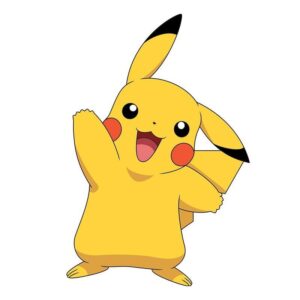MADEMOISELLE MAURICE
A thousand origami to face the walls
“One sheet of paper is very fragile, but hundreds together are untearable.”
Origami, a work of composition
You rarely talk about the process of designing your origami, especially the choice of shapes.
For me, origami is only a pretext to do manual work and to showcase my know-how. My work is characterized more by colors, accumulation, dispersion. In reality I reproduce infinitely the same origami forms. In the beginning I chose them so that I could put them on canvas, with a flat back, which was not the case with a crane. I wanted abstract evocations, which are transformed into a model by accumulation. If you offer a fish, people will see the animal. But an evocative form opens the doors of the imagination, especially if it is inspired by fauna or flora. It was in a youth hostel in Japan that I first discovered these graphic forms in folding manuals. If at the beginning I used many different shapes, I now tend to use only a few, such as the bird or the flower, which allow me to occupy the space.
It’s a real work of composition.
From my first installations, composition was omnipresent, but the folds were always monochrome, with no search for colour. It was also perhaps the influence of my classes, in which the absence of line work did not allow me to restore the absence of shadow and light by gradient flat. Thus, you draw through the solids and the voids, and create a contrast that was very much in evidence in my early work, through accumulation. I love working with my hands. This work expresses the idea, which we tend to forget in our hyper-connected society, that with a little bit of effort we can create complex works. With small pieces of paper cut out I can make lace, and it is a material that is accessible to everyone.
Indeed, paper folding is a universal art.
Paper is a natural, almost raw material that anyone can use. For me it’s a way of showing that art is not something elitist. I have a lot of admiration for people who work with recycled materials because they highlight the accessibility of raw materials that we have at our fingertips.
If we take up the idea of composition again, origami becomes a fresco, becoming tesserae.
The mosaic is for me a beautiful vision of crossbreeding. In Lisbon, I was captivated by the azulejos, by this idea of model. And in Japan I first worked with interlaced ribbons, symbolizing the vision of a mix that I felt, foreign within a completely different culture and exposed to the other.
Anchoring a fragile material in the street
If we speak of Japan, origami has marked contemporary history through the fate of Sadako Sasaki, who died of radiation after Hiroshima and brought the legend of the thousand cranes to light. The fragility of paper has a very strong symbolic dimension.
A sheet of paper is very fragile, but hundreds together are untearable. Sadako Sasaki, with her story, has brought behind her a whole path of thought and a surge of solidarity that has allowed people to unite. This notion of vulnerability can be used for many things: we are stronger together. And the thousand cranes conveyed that emotion.
It was on March 11, 2011 with Fukushima that it made the most personal impression on me. I felt then that Nature was, just like me, vulnerable to nuclear power. When I heard about this legend, I realized that it was a way for us to come together and come up with messages of peace. It’s an action that everyone can take ownership of and disperse.
So the material is an integral part of your message.
When you look at one of my works, you can’t deny the work that’s upstream. The folding marks the beginning of the work. But it’s also important for me to use paper that has a lower environmental impact. I have more and more problems with buying paper for ephemeral installations that will then be destroyed. But the ink used for colouring also contains chemicals. If you want to have a flawless process, you have to make land art.
However, whenever possible, you reuse some of the paper.
This is indeed possible for a few installations where origami didn’t stay very long. I have in my studio a lot of used origami ready to be used again. For example, I did an installation in a fountain in Marseille with papier-mâché spheres, using bleached origami that I had reopened and cut out. But when the installations remain installed for too long, the paper discolours.
On several occasions, whether in Brazil or at the Malakoff reserve, I have recovered elements from the skips to transform them, keeping in mind this preoccupation: which support to use to work this material manually? There is a project that I absolutely want to do in Marseille: using discarded and hardly recyclable wood, take my jigsaw and build bird houses to offer them to passers-by. In the long term, I have to manage to use only discarded raw materials.
With the fragility of paper, the ephemeral aspect becomes an integral part of the work.
This notion of time is very relative because it is based on our human point of view, but for the planet thirty years represents nothing, the duration of a human life neither. Even when the work ages it does not do so well and deteriorates with the weather. I know that with paper there is this crazy idea of spending hours on a creation that will not last. Having lived in Japan, I had been very much influenced by the sakura period, and the ability of people to marvel at the changing colour of a tree. We appreciate this beauty precisely because it is ephemeral.
Personally, I don’t like to see the passage of time on my work. As my work is essentially based on colour, I find that it loses its value by withering, while generating waste. As a result, I sometimes remove my creations myself, because I want people to keep in mind the image of the work just created, that I am not blamed for anything. However, I don’t think you can appropriate everything through images, and I don’t understand people who just pass by and take a photograph without trying to immerse themselves in the work: where is the exchange? What emotion is captured? Nevertheless, I don’t feel offended if someone comes to destroy a creation because from the moment something is placed in the street, everyone is free to do what they want.
metal for perennial works
You’re using more and more metal as a material.
I started to use metal to be able to preserve my works and allow poetry to last longer in the street. I’m taking a turn that I like very much because it allows me to work on something else, without relying on a formula that works. I think this notion of pleasure is very important: with metal birds, I can now work on the reflection of light and see one of my works evolve over time.
With this new material, you completely change your approach.
It’s true that I sometimes contradict myself: I know deep down why I create before reassembling the ideas that guided me. Wanting to leave metal origami for longer periods of time is also a way of fighting the austerity of the city and its buildings. Urbanism is so violent that paper remains a weak means to dialogue with these concrete architectures. Perhaps it is a way of wanting to impose more poetry and colour in the urban space: origami are only passages, but our cities remain. However, I would only like to make these installations in the street, because I don’t see the point of placing them indoors, when they are made to resist the weather.
It is also a change of perspective in the creative process.
It is indeed the basis of the preparation itself that has evolved. Working with paper or shearing, bending sheets or piercing metal, putting on gloves and discovering micro-cuts: the relationship to the material changes as you move to a hard material. When I come to perforate the wall, I come to attack the grey surface, I impose my colours and my messages which become more assertive through the metal. Finally I become more radical than before in my desires.
Freedom and importance of photography
Why are you creating on the street?
At the beginning, I went there because I didn’t want to be constrained and because I wanted to live from my creations. When I was working on my first origami, I wanted to put them on canvas, but then I realized that I needed huge ones. The street made it possible to have no frame limit. I realized that it was a beautiful open-air gallery, but it needed colours. So I decided to give up my monochrome installations, because with these sad shades I wasn’t helping anyone. I find that European cities are very suffocating, and leave no room for colour, unlike those in South America. Finally, I think that there is always a form of pride and satisfaction in having one’s creation visible to everyone, because without this dimension no one would sign one’s work.
How do you perceive photography?
I’m somewhere between a photography addict and a photography addict. I think that a work is above all contextual, and does not include artists who intervene without taking into account the architecture or the pre-existing environment. Photography can allow us to account for this environment by framing it. It also allows more people to get to know my work. Finally, it has a fetishistic aspect: that of keeping one’s images, of drawing up an inventory of one’s creations. It is unthinkable for me to finish a work without taking a photograph of it. It reassures me because it allows me to keep track of the work accomplished.
you will also like

fkdl
Meeting with FKDL, a figure of Art scotch, whose assemblages from yesterday's news magazines elegantly illustrate our current memory.

louyz
Meeting with Louyz, an artist whose artistic family heritage has strongly influenced her passion for painting and Urban Art.

sax
Meeting with an artist whose urban work uses striking colours to make us aware of endangered species.

